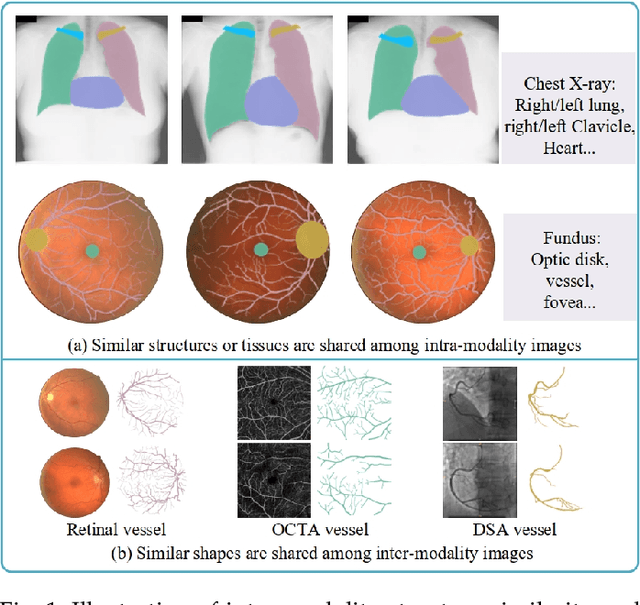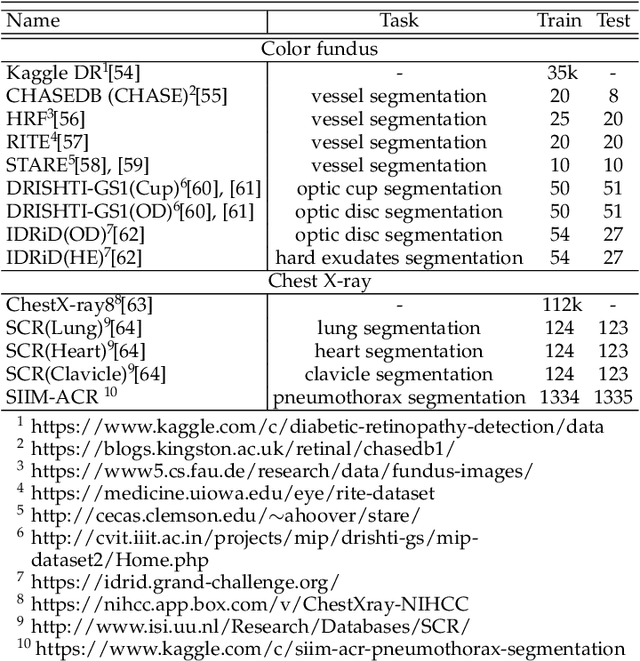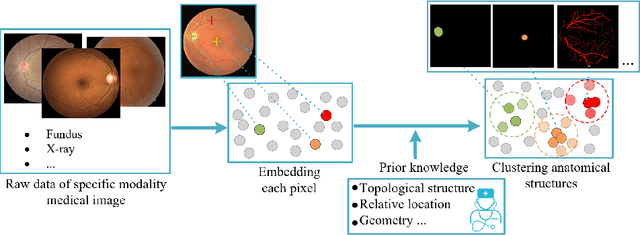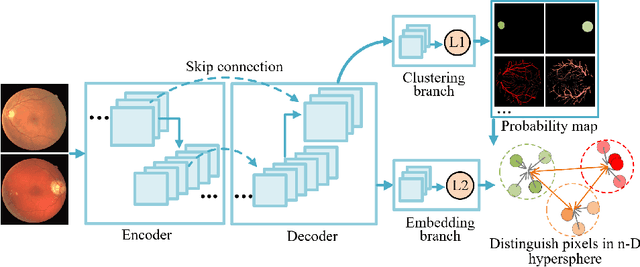Qing Peng
Unsupervised Local Discrimination for Medical Images
Aug 21, 2021



Abstract:Contrastive representation learning is an effective unsupervised method to alleviate the demand for expensive annotated data in medical image processing. Recent work mainly based on instance-wise discrimination to learn global features, while neglect local details, which limit their application in processing tiny anatomical structures, tissues and lesions. Therefore, we aim to propose a universal local discrmination framework to learn local discriminative features to effectively initialize medical models, meanwhile, we systematacially investigate its practical medical applications. Specifically, based on the common property of intra-modality structure similarity, i.e. similar structures are shared among the same modality images, a systematic local feature learning framework is proposed. Instead of making instance-wise comparisons based on global embedding, our method makes pixel-wise embedding and focuses on measuring similarity among patches and regions. The finer contrastive rule makes the learnt representation more generalized for segmentation tasks and outperform extensive state-of-the-art methods by wining 11 out of all 12 downstream tasks in color fundus and chest X-ray. Furthermore, based on the property of inter-modality shape similarity, i.e. structures may share similar shape although in different medical modalities, we joint across-modality shape prior into region discrimination to realize unsupervised segmentation. It shows the feaibility of segmenting target only based on shape description from other modalities and inner pattern similarity provided by region discrimination. Finally, we enhance the center-sensitive ability of patch discrimination by introducing center-sensitive averaging to realize one-shot landmark localization, this is an effective application for patch discrimination.
Unsupervised Learning of Local Discriminative Representation for Medical Images
Dec 17, 2020



Abstract:Local discriminative representation is needed in many medical image analysis tasks such as identifying sub-types of lesion or segmenting detailed components of anatomical structures by measuring similarity of local image regions. However, the commonly applied supervised representation learning methods require a large amount of annotated data, and unsupervised discriminative representation learning distinguishes different images by learning a global feature. In order to avoid the limitations of these two methods and be suitable for localized medical image analysis tasks, we introduce local discrimination into unsupervised representation learning in this work. The model contains two branches: one is an embedding branch which learns an embedding function to disperse dissimilar pixels over a low-dimensional hypersphere; and the other is a clustering branch which learns a clustering function to classify similar pixels into the same cluster. These two branches are trained simultaneously in a mutually beneficial pattern, and the learnt local discriminative representations are able to well measure the similarity of local image regions. These representations can be transferred to enhance various downstream tasks. Meanwhile, they can also be applied to cluster anatomical structures from unlabeled medical images under the guidance of topological priors from simulation or other structures with similar topological characteristics. The effectiveness and usefulness of the proposed method are demonstrated by enhancing various downstream tasks and clustering anatomical structures in retinal images and chest X-ray images. The corresponding code is available at https://github.com/HuaiChen-1994/LDLearning.
 Add to Chrome
Add to Chrome Add to Firefox
Add to Firefox Add to Edge
Add to Edge